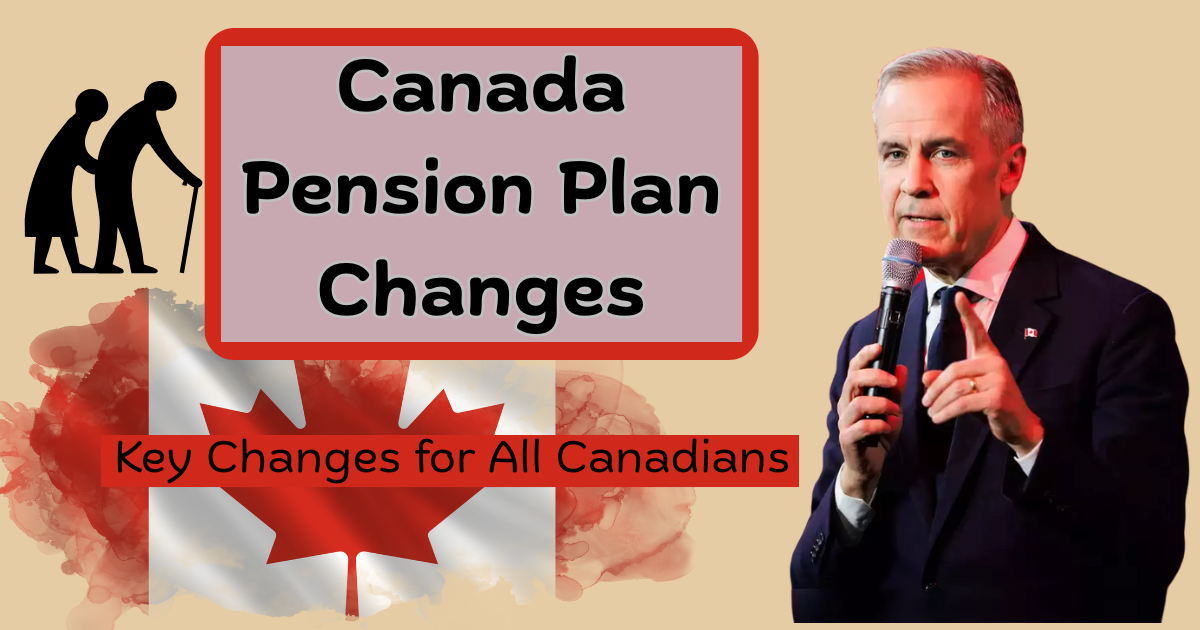Many Canadians are keen to understand the Canada Pension Plan Changes August 2025 to plan their retirement better and avoid surprises.
Canada Pension Plan Changes August 2025
The Canada Pension Plan (CPP) is one of the cornerstones of retirement income for millions of Canadians. In August 2025, several key changes are set to take effect that could impact how much you contribute, when you can collect benefits, and what you might receive in retirement. Whether you’re years away from retiring or already collecting CPP, it’s wise to know what’s changing.
Why the CPP is Changing in 2025
Canada’s aging population and the rising cost of living have put pressure on the pension system. To make sure the CPP remains sustainable and keeps pace with retirees’ needs, the government has introduced adjustments that will gradually roll out over the next few years.

The August 2025 changes are part of this effort to strengthen the plan. The aim is to help more Canadians retire with enough income to cover essentials like housing, food, and healthcare.
Higher Contribution Rates for Workers and Employers
One of the main changes is an increase in the contribution rate for both employees and employers. Starting August 2025, workers will see a small bump in the percentage deducted from their paychecks. Employers will match this increase.
For example, if you earn $70,000 a year, here’s what it could look like:
| Year | Current Contribution | New Contribution (August 2025) |
|---|---|---|
| 2024 | 5.95% | — |
| 2025 | — | 6.15% |
This means slightly higher payroll deductions each pay period, but the extra contributions aim to boost your eventual retirement payout.
Self-employed Canadians, who pay both the employee and employer share, should plan for a bigger impact on their income.
Expansion of Maximum Pensionable Earnings
Another big shift is the expansion of the maximum amount of income covered by the CPP. The ceiling is increasing to include higher annual earnings. In 2025, the maximum pensionable earnings will rise from about $69,700 to nearly $72,500.
So if you’re a high-income earner, you’ll contribute more but also earn a higher benefit later.
Changes to Drop-Out Provisions
The CPP drop-out provisions—which allow you to remove low-income years from your benefit calculation—are being slightly adjusted. The goal is to better reflect modern work patterns, like gig work or career breaks.
Parents who take time off for childcare or people who step back to care for aging family members will still benefit from these provisions, but the new rules clarify how many years can be excluded.
Boost for Post-Retirement Benefits
If you continue working while collecting CPP after age 60, you’ll see a slight increase in the post-retirement benefit (PRB). This means every additional dollar you contribute after retirement could give you more money each year for the rest of your life.
This change encourages Canadians to keep working if they choose to, without losing the benefit of their ongoing contributions.
How to Prepare for These Changes
Whether you’re an employee, employer, or self-employed, it’s smart to review your pay stubs and budgeting plans now. Here are some tips to stay ahead:
- Talk to your employer or payroll department to know how much more will be deducted.
- Use the updated CPP calculator on the Government of Canada’s website to estimate your retirement income.
- If you’re self-employed, plan for the higher contribution and consider adjusting quarterly tax payments.
- Keep track of your maximum pensionable earnings so you don’t get caught off guard.
If you’re near retirement, check whether delaying your CPP payments could benefit you under the new rules. Delaying past age 65 can boost your monthly amount.
The Bottom Line
The Canada Pension Plan changes coming in August 2025 aim to strengthen retirement income for today’s workers and future generations. By understanding what’s changing now, you can make smart choices to protect your retirement lifestyle.
Being informed helps you prepare so you can retire with more confidence and peace of mind.